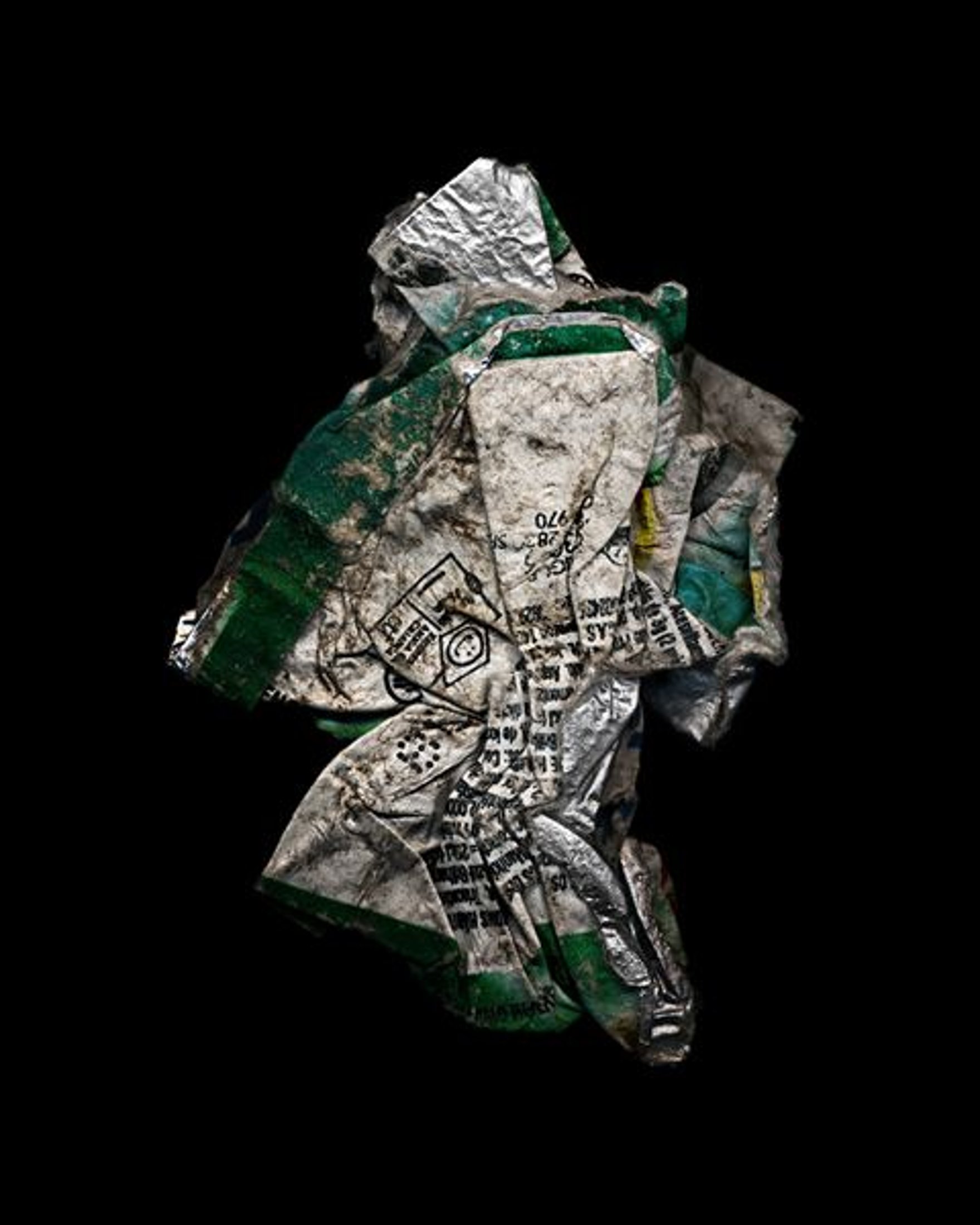In the series Useless Things I try to explore tiny findings: remains of torn, destroyed, deformed wrappings found on the street. Choosing these wrappings is totally intuitive, just seeing and picking them up, without second thoughts, otherwise reason would take over and then they would be left behind.
The photos were taken in my studio later, without any significant change to the objects — not on purpose, just because the objects made themselves that way.
The images were taken by placing the objects on scanner glass, like photograms at the beginning of photography. This method gave me the coherence and the uniformity of light I desired. A purist may question whether this is photography, even though "photography" means "writing with light".
And my work's making is also contemporary: digital. Guided by my desire to experiment with new paths, along with the freedom granted by technology to edit the images on a computer — where I can impose my will on the images, as I would in a black and white laboratory — I started to investigate the plastic possibilities of color digital photography.
Useless Things is based on the premise that we are the only species that produces trash. Some selection criteria were established: look for shapes with an appearance connected to the human figure; reverse the scale notion, sometimes enlarging the object's original size a hundred times; explore the substance of the objects as paper, plastic, metal; and finally, research color, a new element in my work.
The superfluous, all those things without any value which are generated by mankind in the process and in the consumption of useful goods, materializes in images of what is left behind in our daily life.
While I was producing this essay, there was a basic question always present in my mind: What is useless? Or, from a different perspective: what is essential? By trying to answer these questions I decided to look at the most common things: ghosts of our own existence; to look at what no one notices: beauty and fantasy of those who are carried away by the subtleties of shapes and colors.
And to find in the ordinary, the extraordinary.
—Leopoldo Plentz's work will be shown in Buenos Aires in August 2010 as part of the Festival of Light/Encuentros Abiertos. The work will also be published as a book.
Leopoldo Plentz was an entrant in the 2009 Lens Culture International Exposure Awards. Although the jury didn't award him a prize, we at Lens Culture loved the work and are delighted to feature the whole portfolio.

Feature
Useless Things
Leopoldo Plentz makes large-scale scanner art from crumpled, discarded, anthropomorphic pieces of junk he finds in the streets.
View Images
Feature
Useless Things
Leopoldo Plentz makes large-scale scanner art from crumpled, discarded, anthropomorphic pieces of junk he finds in the streets.
Useless Things
Leopoldo Plentz makes large-scale scanner art from crumpled, discarded, anthropomorphic pieces of junk he finds in the streets.

